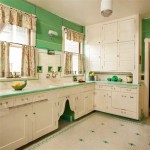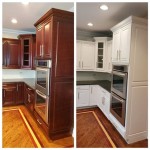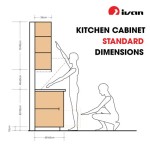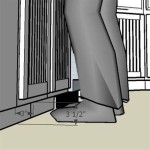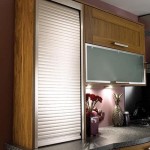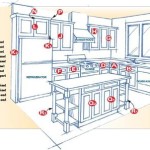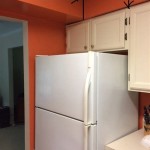How to Paint Your Kitchen Cabinets White
Painting kitchen cabinets white is a popular way to refresh and modernize a kitchen space. It can create a clean, bright, and airy atmosphere, and it can also increase the perceived value of your home. While the process may seem daunting, it is a manageable DIY project with the right preparation and techniques. This article will guide you through the essential steps to successfully paint your kitchen cabinets white.
Preparing the Cabinets
The success of your cabinet painting project hinges on thorough preparation. This step involves removing the doors and hardware, cleaning the surfaces, and sanding for a smooth finish.
- Remove Cabinet Doors and Hardware: This allows for easier and more thorough cleaning and painting on all surfaces. Carefully remove the hinges, knobs, pulls, and any other attachments. Label each piece for easy reinstallation.
- Clean the Surfaces: Use a degreaser or trisodium phosphate (TSP) cleaner to remove grease, dirt, and grime. Thoroughly rinse the surfaces with water and allow them to dry completely. This ensures proper adhesion of the paint.
- Sand the Cabinets: Use 120-grit sandpaper to smooth out rough edges and remove any imperfections. This provides a uniform surface for the paint to adhere to. You can use a sanding block or an orbital sander, depending on your preference and the size of the cabinets.
After sanding, wipe down the cabinets with a tack cloth to remove dust particles. This ensures a clean and smooth surface for the primer and paint.
Priming the Cabinets
Priming is crucial for achieving a durable and even paint finish. It helps with adhesion and prevents the wood grain from showing through the paint.
- Choose the Right Primer: For kitchen cabinets, consider using a bonding primer. It adheres well to various surfaces, including wood, and provides a barrier against stains and odors.
- Apply the Primer: Use a high-quality brush or roller designed for smooth surfaces. Apply a thin, even coat of primer, ensuring complete coverage of the cabinet surfaces. Let the primer dry completely before proceeding to the next step. Two coats of primer may be necessary, depending on the condition of the cabinets.
Allow the primer to dry completely before applying the paint. The drying time depends on the type of primer and environmental conditions. Consult the manufacturer's instructions for specific drying times.
Painting the Cabinets
With the primer dry, you can now start painting the cabinets. Choose a high-quality, oil-based or water-based paint designed for cabinets. Oil-based paints offer superior durability and a harder finish but require more time to dry. Water-based paints are easier to clean up and often have lower VOC emissions.
- Apply the Paint: Using a high-quality brush or roller, apply thin and even coats of paint, ensuring complete coverage. Work in sections, starting with the edges and corners. Allow each coat to dry completely before applying the next coat. Two to three coats of paint may be necessary for optimal results.
- Sand Between Coats: To achieve a smooth and flawless finish, lightly sand the surface with 220-grit sandpaper between coats. Remove dust with a tack cloth before applying the next coat.
After painting, allow the cabinets to dry completely before reinstalling the hardware. This may take several hours or overnight, depending on the paint type and drying conditions.
Finishing Touches
Once the paint is dry, you can reinstall the cabinet doors and hardware. Use the labels to ensure that all pieces are put back in their correct locations. Ensure the hinges are adjusted properly for a smooth and quiet operation.
For a professional look, you can consider applying a clear coat of polyurethane to the painted surfaces. This provides extra protection and enhances the durability of the paint. Consider using a satin or semi-gloss finish for a subtle shine.
With careful planning and execution, painting your kitchen cabinets white can be a rewarding project. It can transform your kitchen into a brighter, more inviting space, while also adding value to your home. Remember to take your time, follow these steps carefully, and you'll be enjoying your freshly painted kitchen cabinets in no time.

How To Paint Your Kitchen Cabinets White Colors And Craft

Painting Dark Kitchen Cabinets White My Weathered Home

My Painted Cabinets Two Years Later The Good Bad Ugly

Painting Your Kitchen Cabinets White

Pros And Cons Of Painting Kitchen Cabinets White De Manor Farm By Laura Janning

Update On Our Diy White Painted Kitchen Cabinets 2 Years Later

How To Paint Your Kitchen Cabinets Houzz

Pros And Cons Of Painted White Kitchen Cabinets Julie Blanner

How To Re Paint Your Yucky White Cabinets

How To Paint Oak Cabinets White Best Diy Guide 2024

